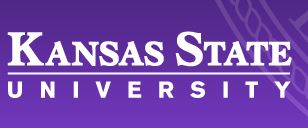The UAS programme at Kansas State University’s Polytechnic Campus is joining a research effort to assist the Federal Aviation Administration’s (FAA) Pathfinder programme, which involves industry partners exploring expansion of UAS operations in commercial airspace
Kansas State Polytechnic is collaborating with PrecisionHawk, a drone data and safety company headquartered in Raleigh, North Carolina, to determine the risk assessment of extended visual line of sight operations of UAS. PrecisionHawk is a part of the FAA’s Pathfinder programme, which involves industry partners exploring incremental expansion of UAS operations in the national airspace. Currently, CNN and BNSF Railway are the only other participating entities, with PrecisionHawk specifically tasked with examining UAS flights outside of the pilot’s direct vision in rural areas for crop monitoring in precision agriculture.
“Kansas State Polytechnic is honoured to work alongside PrecisionHawk on research that we believe is crucial to the progression of Part 107 guidelines and moving the UAS industry in the direction it needs to go,” said Kurt Carraway, executive director of the school’s UAS programme. “Being able to fly with extended visual line of sight could greatly increase the efficiency and productivity of UAS operations; however, it’s important to ensure this can be done safely and routinely, and our collaboration will provide the FAA with meaningful data to make that determination.”
After establishing a working definition for operational extended visual line of sight, or EVLOS, including an initial measured distance in Pathfinder phase one, PrecisionHawk connected with Kansas State Polytechnic to collaborate on a series of controlled field experiments during the summer and fall involving volunteers with varying levels of flight experience. The studies are aimed at calculating an achievable level of safety for drone pilot response time and choice of action when confronted by a manned intruder.
“In extended visual line of sight, a pilot maintains situational awareness of the airspace he or she is flying in while the unmanned aircraft is just beyond the limits of vision,” said Andi Meyer, Kansas State Polytechnic’s research program manager. “At this distance, it is impossible to visually determine the orientation of an unmanned aircraft, while a larger manned aircraft can be seen. It’s imperative for the remote pilot in command to be able to use the electronic flight display to compare the location of each and then rapidly make safe, effective decisions on any required response. This research is needed for the FAA to understand what level of training should be required to fly in EVLOS.”
During the series of experiments conducted on the Knopf farm in central Kansas, volunteers are placed at different positions on the acreage with computers that simulate UAS flight operations in extended visual line of sight. Each participant, with experience levels ranging from amateur to hobbyist to those with FAA manned pilot certificates, maintains awareness of the airspace their simulated UAS is operating in, and when a real manned aircraft flies overhead, they must demonstrate on the computer how they would prevent an air-to-air collision.
“Under Part 107, commercial operators are limited to flying with visual line of sight only, and other than a knowledge test, there are no training requirements for pilots,” said Allison Ferguson, director of airspace research for PrecisionHawk. “The final results of our extended visual line of sight research, which are generalizable to multiple classes of small UAS, will provide a necessary dataset for both regulators and industry stakeholders to establish any required future training, expand Part 107 and most importantly, continue safe operations in the national airspace.”
PrecisionHawk has been working with Kansas State University’s Manhattan campus and its College of Agriculture for the past two and a half years on decision support for crops like corn and soy. Ferguson says PrecisionHawk knew about the university’s UAS program and its reputation of safety, and were waiting on a suitable project to present itself for collaboration.
“Kansas State Polytechnic’s UAS program has a very good understanding of the existing rules and regulations that govern the national airspace and they excel in research, standards development and airmen training, so the Pathfinder initiative was the perfect project to combine both of our expertise,” Ferguson said.
This phase of the extended visual line of sight research is expected to be complete by the end of the year with a third stage of the project starting up in 2017. As results become available, they are provided to the FAA for consideration.




